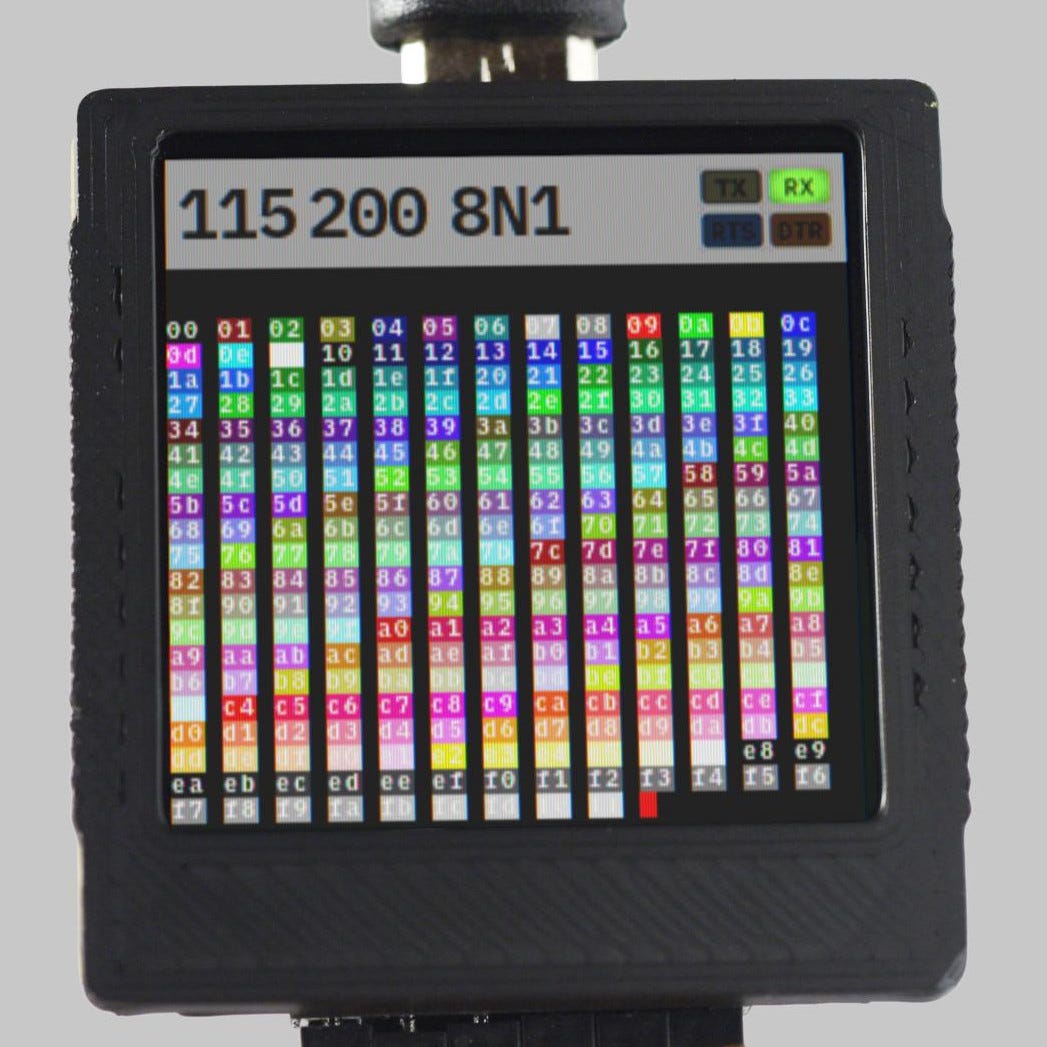This post is all about TermDriver, a USB/serial adapter that is now available on Crowd Supply. You can be first in line for the world’s coolest USB serial adapter. Thanks.
Earlier I wrote about the TermDriver hardware development, and the technology of making tiny text readable. Something that I’m quite pleased about is the firmware that’s inside TermDriver.
The main thing
First and foremost, TermDriver’s job is to pass traffic between the UART and the USB port. That’s obviously what you want from this device. But it also needs to update the screen, redrawing it for every single character that comes through. For the terminal to be an accurate log of the traffic, TermDriver cannot ever drop a single character, otherwise the screen would be corrupt.
Graphics bandwidth
The screen on TermDriver is a surprisingly bright 240x240 LCD, controlled by an ST7789. The RP2040 that’s running the show is connected by an SPI interface to the ST7789, which refreshes the LCD at around 60 Hz. That sets the goal: to look crisp and snappy, the RP2040 needs to redraw the screen at 60 Hz. That’s 13.3 ms per redraw.
Can this be done? Yes, but it’s a lot of bandwidth for a microcontroller. 240x240 pixels at 18 bits per pixel at 60 fps comes out at 62 Mbit/s over the SPI bus. That’s on the edge of the maximum rate for the RP2040.
There’s a clever trick, although it costs a little bit of image quality. Instead of running 18 bits per pixel, the ST7798 can run in a 12 bit per pixel mode (i.e. 4 bits each for red, green and blue). This reduces the theoretical SPI bandwidth to 41 Mbit/s. Much safer. Cutting this corner also makes the RP2040 color code considerably faster.
Dual core action
RP2040 is a true dual-core microcontroller. This is what makes TermDriver possible. One core handles the communications between USB and the UART, and updates a block of memory that represents the screen as an array of characters and colors.
The second core reads from this in-memory screen, does the math to figure out the pixels, and writes it over SPI (using RP2040’s awesome DMA) to the display.
The beauty of this cunning scheme is that even if the data is coming through really fast, changing the whole screen hundreds of times per second, the display updates still happen at a steady 60 Hz. Each 60 Hz tick you see a snapshot of the instantaneous terminal state, guaranteed.
Racing the beam
One thing that increases visual quality is reducing “tearing” — seeing visible partial updates on the screen at the same time. The expensive solution to this is double-buffering, something that the EVE chip in the Gameduino supports in hardware. The ST7789 doesn’t support double-buffering; there’s only enough RAM inside for the visible pixels. But again there is a simple old-school trick that helps. Sometimes called “racing the beam,” it is to time the video writes exactly so they just follow the scanout line. That’s what the rendering thread does. It waits for the vertical refresh, then repaints all the pixels slightly more slowly than the scanout, so on the next frame. Result - smoother scrolling and updates.
Thanks for reading. Please subscribe — every week I write about what I’m making. And if you think a TermDriver would be a useful addition to your workbench, by all means place an order. Thanks again.





crazy bright display you say ? Mind sharing the part number / source ?